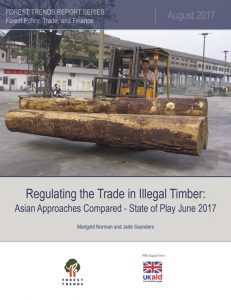Regulating the Trade in Illegal Timber
Asian Approaches Compared - State of Play June 2017
By Marigold Norman, Jade Saunders - Forest Trends View PublicationTogether, the US, EU28 and Australian markets, alongside the Asian countries now designing their own import controls, account for over 90% of global timber imports in 2016. Therefore, as the Asian demand-side regulations start to come into force, the global market incentive for companies trading in legal timber will be significant. Each country is at different stages of developing their legislation and implementing regulations, but a number of key legal parameters have already been agreed and offer insight into the way that each nation seeks to tackle the trade in illegal timber. To date, published details of the legislative developments in Asia have been sparse, with piecemeal information available largely from informal consultations. Proposals have evolved quickly, often at a faster pace than they have been published or translated. With this in mind, this report seeks to synthesize the latest available information (as of June 2017) about the recent legislative developments in Asia. This information is based on documentary analysis and interviews with key experts, and aims to provide an overview of the current situation in Japan, the Republic of Korea, Malaysia, Indonesia, Vietnam, and China. The report also seeks to provide an analytical framework for comparing the requirements of the various pieces of emerging legislation; highlighting key similarities and differences in their approach to excluding illegal timber from their national markets. Finally, the report offers insight into how the emerging Asian timber regulations compare with existing approaches to tackling the trade in illegal wood and offers lessons based on the implementation experience of the EUTR, the US Lacey Act and the Australian ILPA.

